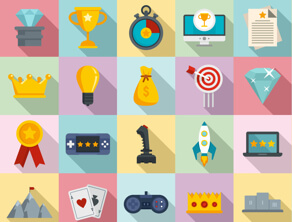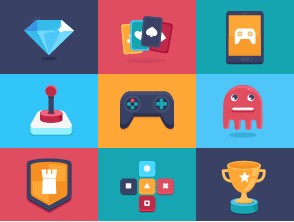Consumer-centric Gamification – Make Gamification work for your consumer (Part 1 of 2)
(This post is written in two parts and addresses the concerns that any Retail Enterprise faces while gamifying a consumer-end process or an element of the process. )
Retail is a volatile space. So, it comes as no surprise that brands struggle to adapt to ever-changing consumer preferences. Mobile has managed to bridge this gap in recent times, because of the “anytime, anywhere convenience” and access to user analytics. Every brand wants to be active in the Mobile space to engage consumers, understand preferences and obtain feedback. The first wave was social; every brand wanted to be on the social space, to follow and engage consumers through social networking.This trend was quickly followed by location-based services; the word on the street was “local,” physical proximity over world-wide presence.
Which brings us to the third wave, Gamification. When carried out the right way, Gamification can engage audiences in ways that traditional Mobile apps cannot. I was in charge of driving the Mobile Strategy for ‘customer engagement’ for a leading retail chain. Like every solutions person, I wanted to apply the recent hot trend and apply it right.
I started with “user/consumer profiling” to understand the behaviour patterns, preferences and pain-points of the consumers in my scope. But, since gamification is a recent trend, my research tools online did not promise accurate information. I wanted to understand the audiences and their pain-points at a deeper level. So I turned to the Solutions team at [x]cube LABS to carry out a field-study. We visited different stores, mapped in-store experiences and talked to people.
During this process, I quizzed a few people in a store about what they thought were the most effective gamified processes in life. I was surprised to hear what they had to say. “ Exams” said one. “Games in school and college,” said another.
It suddenly dawned on me that Gamification isn’t new, it is age-old; it has been an integral part of our lives. Each one of us has psychologically warmed up to the process of excelling in an activity and in turn expecting a reward for it.
That brings me to:
1.Don’t just interpret behaviour patterns. Get to know your audience.
There’s more to understanding user behaviour than decoding analytics. Switch places, instead of sticking to the planning-end of your business, venture out to few of your stores. Be an end-customer for a change. Talk to people and try to understand what bores them, what excites them, and what brand aspects are they attached to? You are sure to have a new perspective on what to gamify in your consumer-cycle.
Over a few cups of coffee, I asked people at my workplace to talk about how they would respond if their day-to-day tasks were gamified. Entering the time-logs could be monotonous; maybe, we could look at gamifying it? Viewing reports in never-ending grids is uninspiring; what if someone comes up with an interesting and engaging way to do it?
People seemed to like these ideas, because every idea was driving fun. We were talking about transforming boring, non-engaging tasks into something enjoyable and gratifying; something one would be self-motivated to do. That brings me to:
2. Pick an area that is non-engaging.
The objective of Gamification is to drive engagement and fun. So, if you choose an aspect in your line-of-business which is already engaging, then the curve of customer engagement would be flat. So start with one of the most boring areas of your process. Try and understand what will make each of these fun. Invite your most-loyal customers to a flash-preview of the gamified process. Document what they enjoy the most. At the end of this activity, you are sure to have your Gamification strategy ready.
One of my female colleagues had an interesting insight to share during the course of these conversations. “It is a known fact that women love to window shop and men don’t like it so much. I would be interested in gamifying such small but challenging areas.” I quickly searched for any Gamification of window shopping and chanced upon Adidas Neo window shopping in Germany.
It’s a universal fact that pretty models catch the attention of men, combine that with a widely accepted fact that any consumer-end solution needs to be simple-that’s Adidas Neo Window shopping for you. A user just has to drag clothing items and voila, the model mirrors your movements just like Tom cat in Talking Tom does. Window shopping cannot get any more interesting than that. Which brings me to:
3. Do not gamify your end-to-end process. Opt for gamifying select touch points.
A majority of the target audience belongs to the ‘Generation C’ (The connected consumer) . One of the defining characteristics of Gen. C. is an affinity for instant gratification. Time and convenience are a customer priority. It is wiser for your business to choose one or two select touch points and -bring them to life as exciting and engaging mobile apps through gamification. Because at the consumer-end, gamification is just not a solution, it’s a statement made by your brand.
![Blog-[x]cube LABS](https://d6fiz9tmzg8gn.cloudfront.net/wp-content/uploads/2016/06/blog_banner.jpg)






